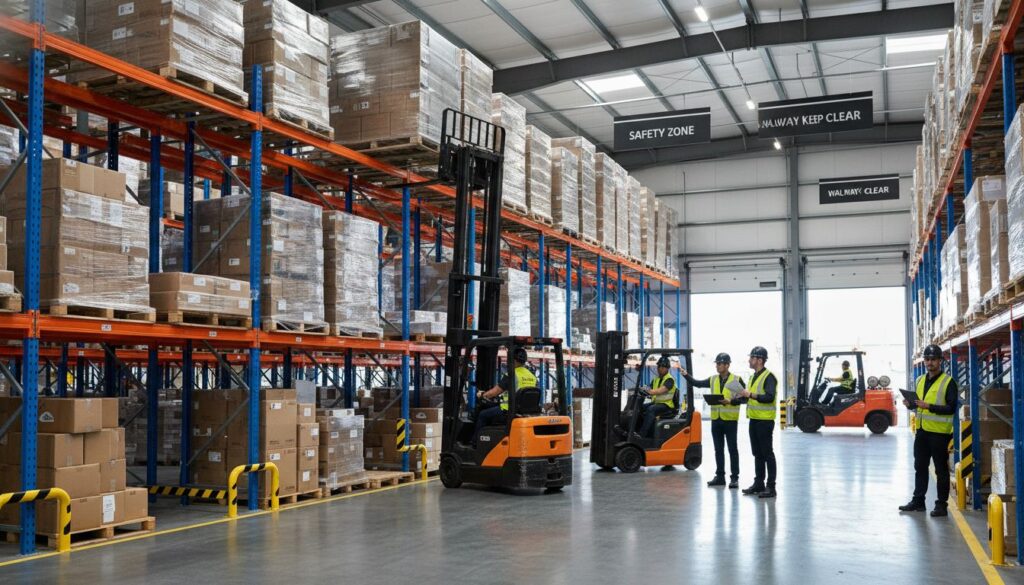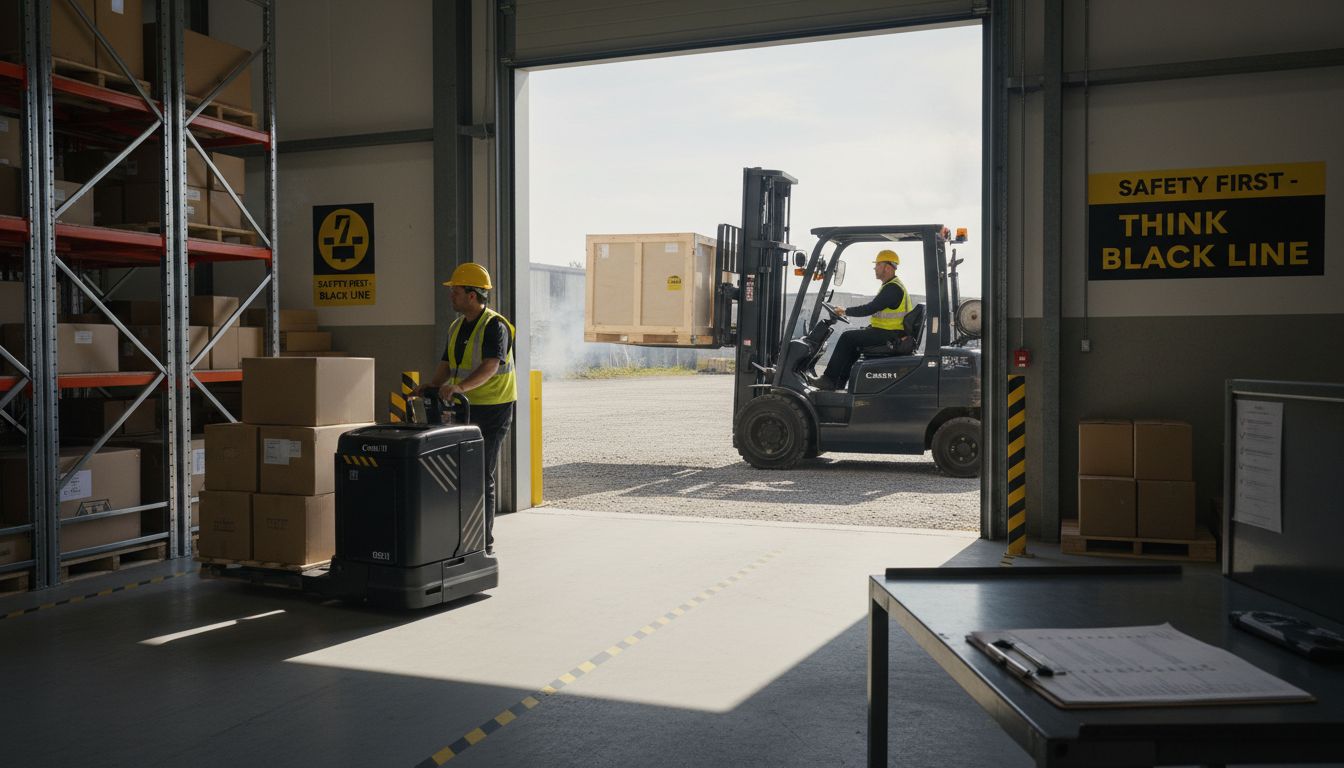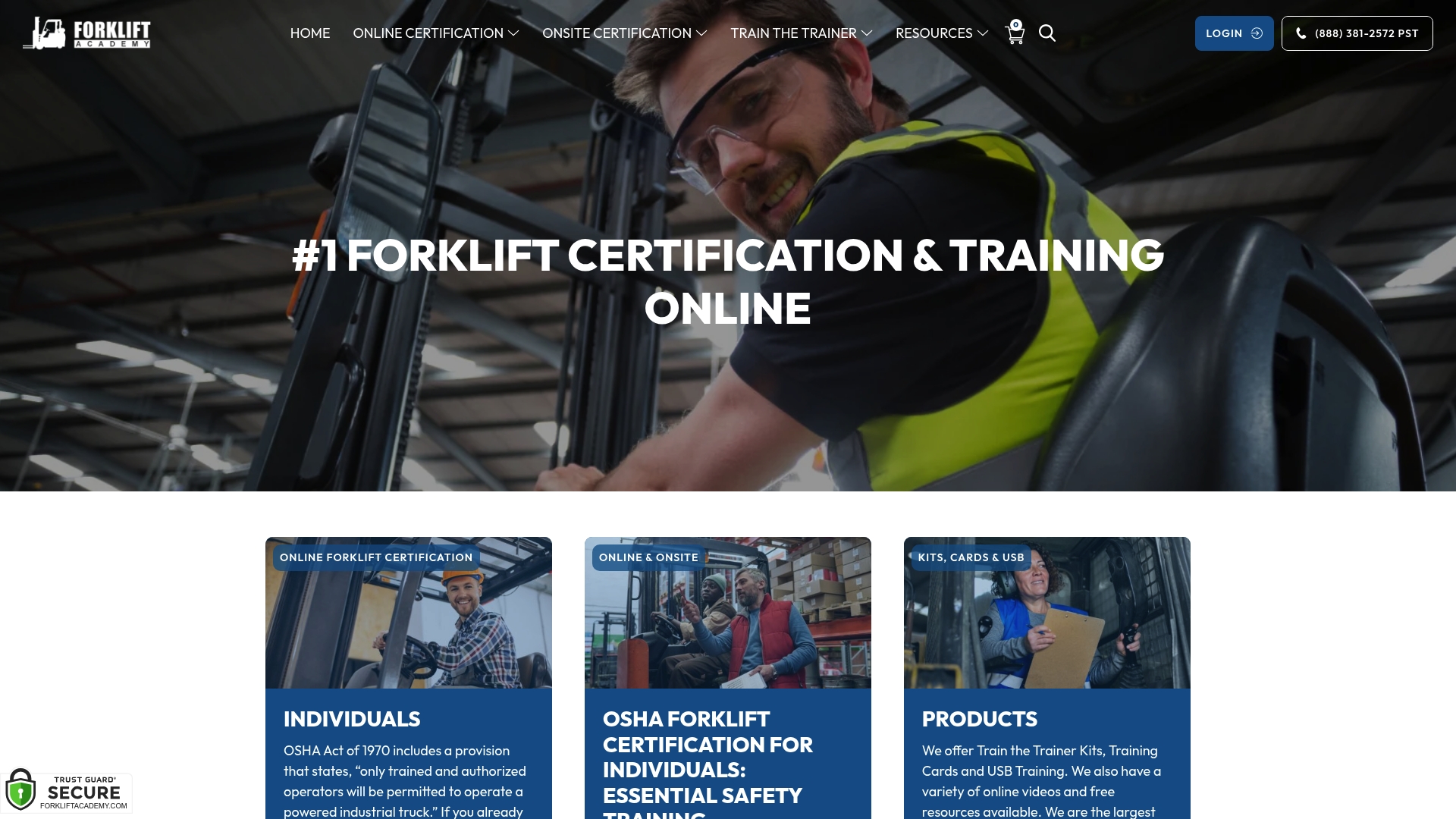
More than seventy thousand forklift accidents are reported in the United States each year, highlighting just how vital proper equipment and training are to any warehouse or factory. Efficient material handling can make the difference between seamless operations and costly delays. By understanding what truly defines a forklift and its essential roles, professionals gain the power to improve safety, streamline workflows, and choose the right machine for every challenge.
| Point | Details |
|---|---|
| Forklift Functions | Forklifts are essential for lifting, transporting, and stacking materials in various industrial environments, enhancing operational efficiency. |
| OSHA Classification | Understanding the seven forklift classes is crucial for selecting the appropriate equipment based on power source and operational needs. |
| Safety Standards | Employers must adhere to OSHA safety standards, including mandatory training and equipment inspections, to ensure a safe working environment. |
| Forklift Selection | Carefully assess the operating environment and performance requirements to choose the right forklift to maximize safety and efficiency. |
A forklift is a powerful industrial vehicle specifically engineered to lift, transport, and stack materials efficiently in manufacturing, warehousing, and logistics environments. According to research from Toyota Forklift, these versatile machines are integral to operations across multiple industries, handling critical material handling tasks with precision and speed.
At its core, a forklift consists of several key components that enable its functionality: a robust powered industrial truck with adjustable lifting forks, a stable counterbalanced chassis, and a sophisticated hydraulic system that allows operators to raise, lower, and maneuver heavy loads. As noted by Wikipedia, these vehicles emerged in the early 20th century and have since revolutionized material handling processes worldwide.
Modern forklifts are designed to serve diverse operational needs, with capabilities extending far beyond simple lifting. Their primary roles include:
For professionals seeking comprehensive insights into forklift operations, our guide on types of forklifts provides an in-depth exploration of these remarkable machines and their critical role in industrial productivity.
According to the Occupational Safety and Health Administration (OSHA), forklifts are comprehensively classified into seven distinct classes, each designed to meet specific operational requirements and environmental challenges. Understanding these classifications is crucial for selecting the right equipment and ensuring workplace safety. Learn more about forklift certification requirements to enhance your operational knowledge.
The seven OSHA forklift classes represent a systematic approach to categorizing powered industrial trucks based on their power source, design, and intended application. These classes include:
Here’s a comparison of OSHA forklift classes and their key characteristics:
| Forklift Class | Power Source | Typical Environment | Main Application |
|---|---|---|---|
| Class I | Electric | Indoors | Warehouse lifting |
| Class II | Electric | Narrow aisles | Tight storage handling |
| Class III | Electric | Indoors/ground level | Pallet transport |
| Class IV | Internal Combustion | Indoors/smooth floors | Heavy lifting on solid surfaces |
| Class V | Internal Combustion | Outdoors/mixed surfaces | Versatile outdoor tasks |
| Class VI | Electric/IC | Indoors & Outdoors | Towing/pulling loads |
| Class VII | Internal Combustion | Outdoors/rough terrain | Construction/uneven surfaces |
Each forklift class offers unique capabilities, with designs tailored to specific workplace environments.
 The classification system ensures operators can match the right equipment to their precise material handling needs, maximizing efficiency and maintaining workplace safety standards.
The classification system ensures operators can match the right equipment to their precise material handling needs, maximizing efficiency and maintaining workplace safety standards.
Each forklift class is engineered with unique design characteristics that make it exceptionally suited for specific workplace environments. According to research from Carry Up Material Handling Equipment, these specialized trucks offer targeted solutions for diverse material handling challenges.
Let’s explore the distinctive features of key forklift types:
Class I Electric Motor Rider Trucks
Class III Electric Motor Hand Trucks
Class V Internal Combustion Trucks with Pneumatic Tires
Operators must carefully match forklift types to their specific operational requirements. Understanding forklift certification nuances can help professionals select the most appropriate equipment for their workplace needs, ensuring both efficiency and safety.
OSHA establishes rigorous safety standards for forklift operation to minimize workplace accidents and ensure comprehensive operator preparedness. According to OSHA guidelines, these standards are not just recommendations, but critical requirements that every organization must follow to protect workers and maintain a safe working environment.
Key OSHA certification and operational standards include:
Key points to ensure compliance with OSHA forklift training safety standards provide essential guidance for businesses seeking to maintain a safe and legally compliant operational environment.
Selecting the appropriate forklift is a critical decision that directly impacts operational efficiency and workplace safety. According to research from Carry Up Material Handling Equipment, the selection process involves carefully evaluating multiple key factors to ensure optimal performance.
Critical considerations for forklift selection include:
Operating Environment
Performance Requirements
Power Source Evaluation
Professionals seeking to make an informed decision can benefit from understanding key forklift operator skills that complement equipment selection, ensuring both machine and operator capabilities align with workplace demands.
Forklift operations involve inherent safety challenges that require proactive management and comprehensive training. According to OSHA guidelines, understanding and mitigating potential risks is crucial for maintaining a safe workplace environment and preventing potentially catastrophic accidents.
The most prevalent safety risks in forklift operations include:
Top forklift safety mistakes to avoid can provide additional insights into preventing workplace accidents and protecting both operators and surrounding personnel.
Understanding the different forklift types and their classifications is crucial for workplace safety and operational efficiency. If navigating the complexities of electric motors, internal combustion engines, and OSHA classes feels overwhelming, you are not alone. Many professionals struggle with matching the right forklift to their environment while ensuring compliance with strict safety standards. This can be a significant challenge when your goal is to enhance productivity without compromising safety.

Take control of your forklift knowledge and skills today by exploring specialized training and certification options tailored to your needs. At Forkliftacademy.com, we offer comprehensive OSHA-compliant courses along with expert resources in our Forklift Safety Archives and Forklift License Archives. Act now to secure your certification and protect your workplace with confidence.
Forklifts are classified into seven distinct classes by OSHA: Class I (Electric Motor Rider Trucks), Class II (Electric Motor Narrow Aisle Trucks), Class III (Electric Motor Hand/Rider Trucks), Class IV (Internal Combustion Engine Trucks with Solid/Cushion Tires), Class V (Internal Combustion Engine Trucks with Pneumatic Tires), Class VI (Electric and Internal Combustion Engine Tractors), and Class VII (Rough Terrain Forklift Trucks).
When choosing a forklift, consider the operating environment (indoor vs. outdoor), performance requirements (load capacity, lift height, maneuverability), and the power source (electric vs. internal combustion) to ensure it meets your specific needs.
To maintain safety while operating a forklift, follow OSHA guidelines by completing mandatory operator training, conducting pre-operational equipment inspections, and adhering to load handling and transportation procedures, including using proper personal protective equipment.
Electric forklifts produce zero emissions and are ideal for indoor use due to their quiet operation and maneuverability. Internal combustion forklifts offer versatility for outdoor tasks and varied terrain, often providing higher lifting capacities and better stability on uneven surfaces.